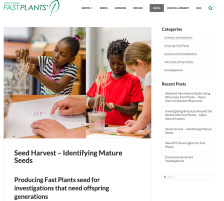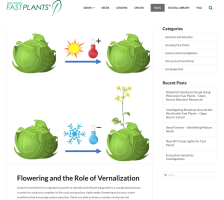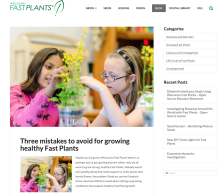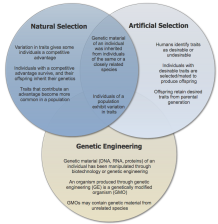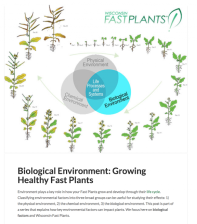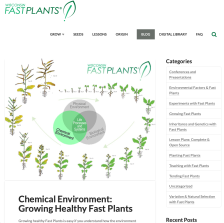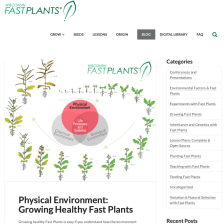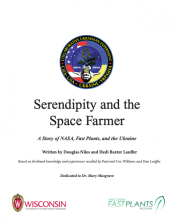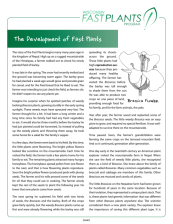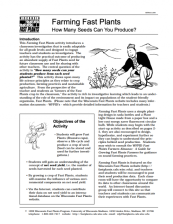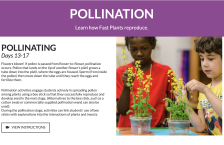Browse Resources
Educational Resources -- Background Fast Plant information
Resources | |
|---|---|
This blog post from the Fast Plants team provides detailed advice and instructions on the ideal timing for harvesting Fast Plants seeds. It is important to harvest at the correct time, to ensure maximum seed viability for planting the next generation. This post addresses several frequently asked...
This blog post from the Fast Plants Team addresses the question "Do Fast Plants need Vernalization to Flower?". This post describes the concept of vernalization (requiring a cold period to induce flowering) and its role in regulating the development of flower structures in flowering plants. Some...
This blog post from the Wisconsin Fast Plants Team describes three ways to optimize your growing environment to grow healthy Fast Plants.
Tips for growing healthy plants are focused around the following three concepts, with descriptions of ideal environmental conditions for each:
1. Not enough...
This blog post from the Fast Plants Team addresses the question "Are Wisconsin Fast Plants Genetically Engineered Plants?". This post describes the origins of Fast Plants (they are the result of conventional plant breeding, not genetic engineering), defines terms related to plant breeding and...
Read this blog post for background information about the relationship between the biological environment and life processes and systems in Fast Plants.
Growing healthy Fast Plants is easy if you understand how the environment can affect growth and development. Three broad categories of...
Read this blog post for background information about the relationship between the chemical environment and life processes and systems in Fast Plants. Growing healthy Fast Plants is easy if you understand how the environment can affect growth and development. Three broad categories of environmental...
Read this blog post for background information about the relationship between the physical environment and life processes and systems in Fast Plants.
Growing healthy Fast Plants is easy if you understand how the environment can affect growth and development. Three broad categories of environmental...
Who knew that rocket science could have so much in common with botany and plant pathology? This is a human interest and science story that documents from firsthand accounts and artifacts the historical context and scientific events relevant to an important collaborative Fast Plant investigation on...
This is "The Story of Fast Plants" - a short story of the origins of Brassicas and the work of Dr. Paul Williams, developing Brassica rapa. Reading level ~7th grade.
This Farming Fast Plants activity introduces a classroom investigation that is easily adaptable for all grade levels and designed to engage teachers and students as investigators. The activity has the practical outcome of producing an abundant supply of Fast Plants seed for future classroom use and...
This webpage from the Fast Plants website explains how to pollinate Fast Plants, including instructions for making bee sticks and pollination videos and tips.
| |
